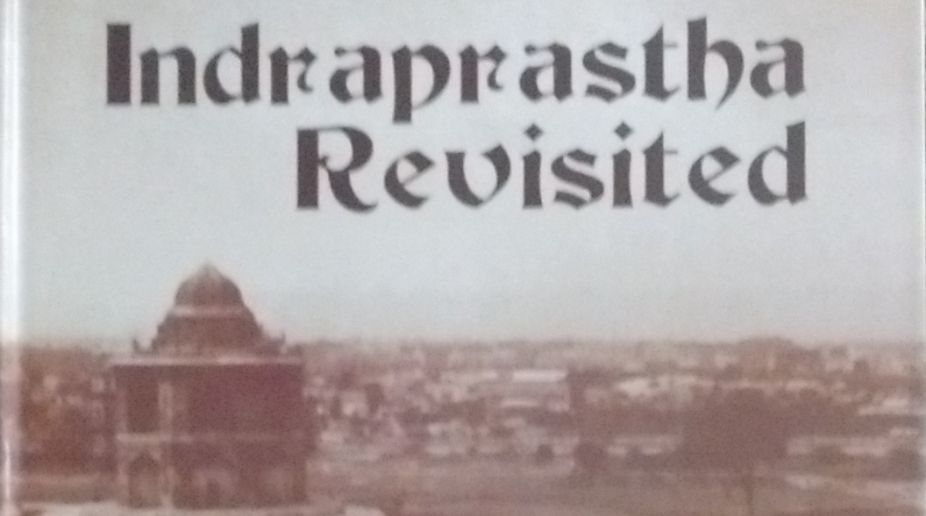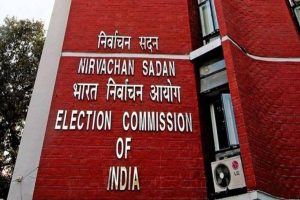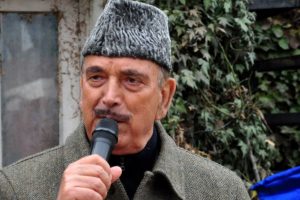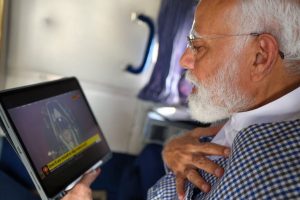The Draupadi Dream Trust founded and chaired by Neera Misra of Kampilya-Panchali’s birthplace organised the first Indraprastha Festival in November 2016 to highlight the need for recovering and showcasing evidence of this millennia old city. Besides a performance of the Indonesian “Wayang Kulit” depicting how Indraprastha was built according to the legend in Bali, an international conference was held covering a variety of topics centred on Indraprastha. As many as 23 of these papers have been published in this large format volume along with a host of sketches and plates that make it an important book for anyone interested in the heritage of ancient India.
There are several papers by eminent archaeologists led by their doyen Dr BB Lal who was the first to locate and excavate both Hastinapur (in Meerut district) and Indraprastha (in Purana Quila) 60 years back. Unfortunately, since then only desultory digging has taken place. So far nothing earlier than Painted Grey Ware pottery (around 1000 BCE) has been found at sites associated with the Mahabharata.
However, JN Ravi’s extremely valuable study of Balarama’s pilgrimage along the Sarasvati reveals the links that must have existed between Harappan culture along this river (like Rakhigarhi, Bhirrana about 3000 to 2000 BCE) and Hastinapur on the Yamuna and Indraprastha on the Ganga. That is why it is puzzling why no excavation has been carried out at Kurukshetra, the site of the bloodiest of all carnages where 11 armies were decimated.
At least some metal artefacts ought to turn up if there is any historical basis to the itihasa. Ravi’s paper unaccountably omits the tirthas named after the Vriddhakanya (old woman) who attained Swarga only after marrying and the kanya who went to heaven remaining a virgin all through. The latter half of his paper is an excursion in Euhemerism with Yayati’s sons migrating to become Danaans and the Irish (Danavas), Avestans as Daityas, only missing out on linking Ila with Elam in ancient Iran! Acharya Chatursen had done a much better job in his novel, Vayam Rakshamah. “Archaeo-astronomy” is a new term coined by those dating the Mahabharata war by using astronomical data from the text.
This book exposes the mutually contradictory dates arrived at. Narhari Achar fixes it in 3067 BCE, along with precise dates for Draupadi’s birth, marriage and the lacquer house episode. As the editors have not provided the bibliography for his paper, the references are not known. AK Bhatnagar decides upon 14 October 1793 BCE for the start of the war, besides fixing dates for Varanavat, Krishna’s embassy, the deaths of Bhishma, Drona, Karna, Duryodhan.
Besides interpreting that data differently, Koenraad Elst favours post-1900 BCE because the Sarasvati “must have” (?) dried up around that time and as Dwarka is dated to 1700- 1500 BCE by SR Rao. Sita Nath Pradhan fixed the war as occurring in 1150 BCE. This is a fruitless area of exploration. AD Mathur draws only upon the Shanti Parva for the principles of governance instead of linking it to what is found elsewhere, like the Machiavellian advice Kunika tenders to Dhritarashtra for getting rid of the Pandavas. Come Carpentier skips all over comparative mythology, compares Indraprastha to Angkor and can come to no conclusion about the historicity of the city.
In asserting the existence of copper weapons for the war he is mistaken as no such weapons have been found in any site of that antiquity in this region. Shashi Tiwari’s account of Kaliyuga dynasties with reference to Indraprastha is disappointing as it merely paraphrases Pargiter’s research instead of looking at the different findings of Sita Nath Pradhan in his Chronology of Ancient India (1927). She even misattributes a list of puranas to the Mahabharata. She assigns the last date for them to seventh century AD whereas the Bhavishya Purana includes references to the British, the Brahmavaivarta Purana is of the 16th century, the Linga and Shiva Puranas are 10th to 11th century. The most flagrant error is her assertion that Yudhishthira’s line ruled in Indraprastha whereas Arjuna’s dynasty ruled in Hastinapura while Krishna’s great grandson Vajra (and his descendants?) ruled in Indraprastha.
There is an important paper by Chahan and Pachauri on the role NGOs and citizens can play in preserving and promoting our cultural heritage. Renu Khanna contributes an architect’s vision with pictures on showcasing Indraprastha as a tourist destination. She refers to having studied “the detailed English illustration of the Mahabharata” which does not exist.
The editors should have corrected this to “translation” and provided the reference. Swapna Liddle’s paper is a valuable presentation of how local builders introduced traditional Hindu motifs even while constructing Muslim edifices, like the Kirtimukha, the lotus, the water pot but did not adopt the true arch till 1280 (Balban’s tomb). The Qutub Minar even has an invocation to Vishvakarma and the name of the Hindu architect. Unfortunately, these fascinating aspects are not highlighted in the ASI plaques. Sudha Satyawadi contributes an illuminating paper on art and architecture in the Janapada period while Arundhati Dasgupta summarises how modern art depicts the Mahabharata.
Rupali Yadav describes the dice-game scene in a mural of the Chattar Mahal of Kota Palace, Rajasthan. Unfortunately, the plate shows the full mural with no separate picture showing the detail of Duryodhana consulting an astrologer. The editors should have ensured this. Somnath Chakraverty writes on the ethnography of the epic. He draws upon BS Upadhyaya and HD Sankalia without citing the references, asserting that names of nagas are drawn from Assyrian kings and so they came from that region. He asserts without any evidence that the Yadavas were from Western Asia and Iran. He also says that “there are enormous evidences” from Indus towns of serpent worship, again without supporting reference. It is disconcerting to find him claiming that rock art at Bhimbetka and elsewhere records “mass genocide and battle,” replicated throughout India. He states that these belong at least to the Gupta period if not earlier.
Rock art is dated much earlier (10,000 BCE at Bhimbetka). Major General GD Bakshi’s paper on the geopolitics of that time is a superb analysis showing that the autocratic royalty banded together to crush the nascent democratic (more oligarchic) government of Yadavas. Krishna kept the Yadavas out of the war so that when the field was swept clear, they could take over Indraprastha under Krishna’s great grandson Vajra. Kritavarma’s son with the Bhojas was given Marttikavat and Satyaki’s son was settled on the banks of the Sarasvati, both nearby. KTS Sarao’s interesting paper describes little known data from Buddhist sources regarding Indraprastha, like Buddha’s razor and needle being deposited there and its ruler being Dhananjaya Koravya of the Yudhitthila gotra. Several of the contributors make the common error — not expected from Indologists — of asserting that initially the Mahabharata consisted of only 8,800 verses.
This is the number of riddling, knotty slokas Vyasa composed to gain time to compose more while Ganesh scratched his head trying to understand them. The “Jaya” version was 24,000 slokas without ancillary tales, which Vyasa expanded to several lakhs of which one lakh verses were recited to Janamejaya by Vaishampayana in his guru’s presence during the sacrifice of snakes in Takshasila. Neera Misra’s paper presents an overview of the archaeological and other data on the subject, most of which has already been featured in individual papers. Hers is a fervent plea for opening up the Purana Quila site for displaying the excavations, which ought to be taken further and making it a tourist destination.
The large number of colour plates and sketches of archaeological finds, maps and paintings make this volume a collector’s item. The editors should have added a line or two about each contributor instead of merely providing their email addresses.
(The reviewer retired as additional chief secretary, West Bengal, and specialises in the Mahabharata)











